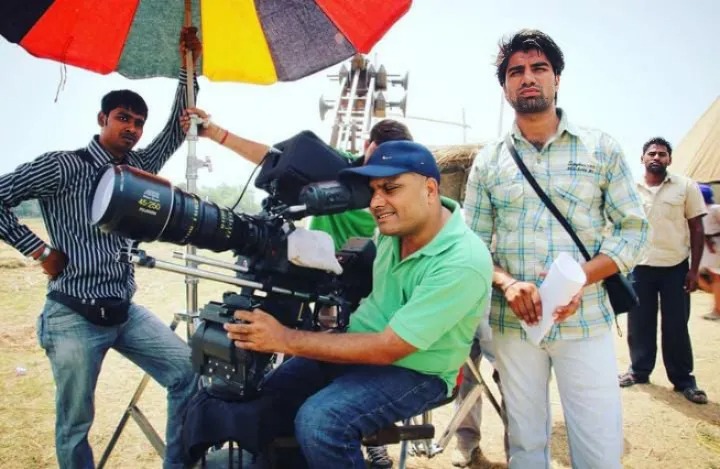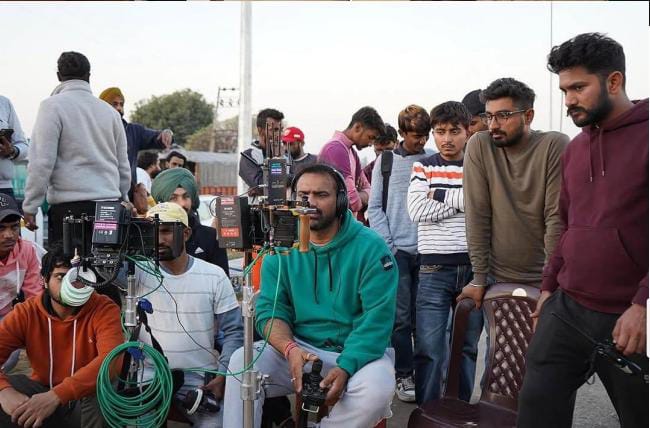Kharak Singh Cameraman
Kharak Singh Cinematographer: The Visionary Behind Stunning Frames in Amaran, Darra, and the Classic Bombay




In the world of Indian cinema, where storytelling relies as much on visuals as on performances, the role of a cinematographer and camera operator becomes central to the filmmaking experience. Among the many talented technicians who have shaped Indian films over the decades, Kharak Singh cinematographer stands out as a professional whose work has contributed significantly to the visual depth of multiple films across eras. His journey spans from the golden days of the 1990s to the evolving landscape of 2024, touching some of the most memorable productions in Tamil, Punjabi and Hindi cinema.
Kharak Singh’s name appears in projects as diverse as Mani Ratnam’s 1995 classic Bombay, the Punjabi action-drama Darra released in 2016, and the critically praised Tamil film Amaran in 2024 featuring Sivakarthikeyan, Sai Pallavi and Bhuvan Arora. With each film, he has demonstrated precision, patience and a deep understanding of how to use the camera as an instrument of storytelling. Although the camera operator’s role often stays behind the limelight, the consistency and emotion in the visuals owe greatly to his skill.
The early phase of Singh’s career began during a period that demanded extensive manual expertise, long hours on set and a deep familiarity with every aspect of the camera. The 1990s were a turning point for Indian cinema, both in terms of narrative evolution and technical advancement. It was during this time that Kharak Singh contributed to Bombay (1995), a film that would go on to become one of India’s most iconic love stories. Directed by Mani Ratnam and starring Manisha Koirala and Arvind Swamy, Bombay required a sensitive and powerful visual approach to complement its emotional narrative. The film revolved around a Hindu–Muslim love story set against the backdrop of the Bombay riots, and its imagery had to convey romance, tension, heartbreak and hope with equal intensity.
In Bombay, the camera work played a pivotal role in creating the film’s lasting emotional impact. As a member of the camera team, Singh contributed to scenes that demanded delicate lighting, controlled movement and a natural portrayal of human emotion. The movie continues to hold an IMDb rating of 8.1, reflecting not only its strong story but the rich cinematography that shaped its timeless appeal. For Singh, the opportunity to work on such an influential project helped strengthen his technical foundation. It also gave him a sense of how visuals can elevate a story far beyond what is written on the page.
After beginning his journey in an era known for artistic depth, Kharak Singh eventually transitioned into regional cinema, where he contributed to several films that required more grounded and culturally rooted visuals. One of his most notable works from this period is Darra (2016), a Punjabi film that explored themes of loyalty, conflict and rural life. Unlike the vibrant, larger-than-life look associated with mainstream Punjabi cinema, Darra had a more intense tone that required realistic lighting and authentic environmental representation. Singh, working as the camera operator, helped shape the look of the film through steady execution of dramatic scenes and a visual language that matched the story’s emotional weight.
Though the film’s IMDb rating of 5.3 places it in the mid-range, those familiar with the production acknowledge the sincerity in its visuals. Singh’s work on Darra reflects his ability to adapt to different cinematic languages. Rural settings, open landscapes, action-driven moments and emotional close-ups required a visual balance that he delivered with professionalism. His techniques helped the film achieve a sense of realism, an essential quality for stories rooted in cultural traditions and interpersonal drama.
Decades after his early career and many years after Darra, Kharak Singh returned to a major national spotlight with his contribution to one of Tamil cinema’s biggest releases of 2024, Amaran. Starring Sivakarthikeyan, Sai Pallavi and Bhuvan Arora, the film gained widespread attention for its gripping story, strong performances and impressive technical execution. With an IMDb rating of 8.1, Amaran is regarded as one of the standout films of the year. Singh’s role as camera operator played a crucial part in shaping the film’s compelling visuals.
Amaran required a modern and dynamic cinematographic approach. The film alternates between emotional drama and high-intensity action, demanding precise coordination and inventive camera work. Singh was responsible for handling complex setups, ensuring smooth transitions and capturing the essence of scenes that ranged from large-scale sequences to intimate character moments. His familiarity with both classical and contemporary filmmaking tools helped him bring a measured, polished visual style to the project.
Working with actors like Sivakarthikeyan, known for his energetic performances, and Sai Pallavi, celebrated for her expressive acting, meant that the camera had to move in sync with the emotional tone of each frame. Singh’s ability to maintain steady movement during tense action scenes while shifting to subtle framing for emotional moments contributed significantly to the film’s immersive effect. His experience helped bridge the demands of high-budget filmmaking with the storytelling needs of the narrative.
The hallmark of Kharak singh cinematographer lies in his adaptability. He has worked across different languages, storytelling formats and technological eras. From film reels and manual setups in the 1990s to high-end digital cinematic equipment in the 2020s, Singh has embraced every stage of technological advancement without compromising on the emotional integrity of the visuals. Whether it is the soft lighting and intimate framing of Bombay, the earthy tones and realism of Darra, or the bold, modern aesthetic of Amaran, his work displays an understanding of how different stories need different visual rhythms.
Another aspect that has defined Singh’s career is his commitment to teamwork. Cinematography is never a one-person job. It requires coordination with the director, assistant directors, lighting crew, art department, stunt teams and actors. Singh’s colleagues often describe him as calm, focused and dependable under pressure. His disciplined approach on set allows directors to trust him with visually challenging sequences. This reliability has helped him sustain a long career in an industry where competition and rapid change are constant.
Though his work is often behind the scenes, every camera operator plays a key role in bringing a director’s vision to life. Singh’s contribution is seen not merely in technically correct shots but in his ability to capture performances authentically. His consistent involvement in films with emotionally charged narratives shows his instinct for understanding human emotion. That instinct translates into camera angles, lighting choices and movement that feel organic rather than forced.
The legacy of a cinematographer or camera operator is defined not only by the number of films they work on, but by the emotional impact their visuals create. In that regard, Kharak Singh has built a path that spans decades of Indian cinema. His career stands as an example of how dedication, adaptability and artistic awareness can keep a technician relevant across generations. From the intense love story of Bombay to the dramatic tension of Darra, and the modern cinematic flair of Amaran, his body of work forms a bridge between classic and contemporary filmmaking styles.
As cinema continues to evolve, professionals like Singh show that experience combined with openness to change can create visuals that feel fresh, meaningful and unforgettable. His journey reflects the importance of the unseen hands that shape every frame before it reaches the audience. For many aspiring cinematographers and camera operators, his career becomes a study in patience, learning and continuous refinement of the craft.
With the success of Amaran and the enduring memory of films like Bombay, the name Kharak singh cinematographer continues to grow in recognition. His contributions remain a vital part of the films he has touched, proving that even behind the camera, some artists leave a mark that lasts far beyond the rolling credits.
